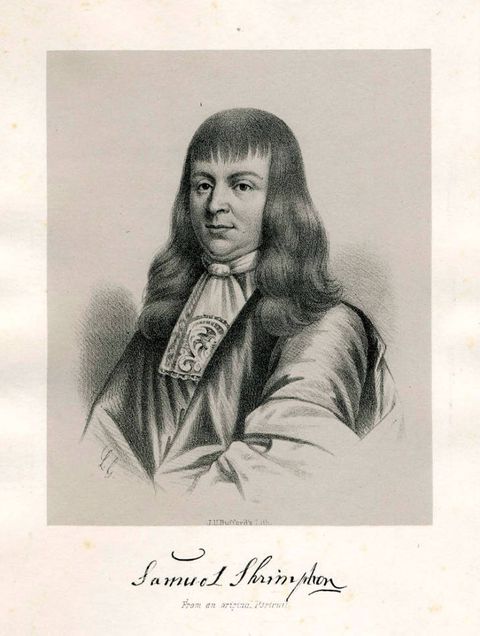Samuel Shrimpton lithograph

Dylan Woods, Chad Jones, and Stephanie Sala
Lithographs are a type of artwork that consists of black and white shading. It looks very similar to modern sketching done with a pencil. This form of art was first created in Germany during the late 18th century. To create a lithograph, an artist presses down oil and water into an outlined image. The black and white contrast often create an intimate piece of art.
Lithographs became one of the ways to create a portrait of someone. One American artist that created lithograph portraits of important figures was Leopold Grozelier. Originally born in France in 1830, he would make his career as an artist in the United States. Grozelier created lithograph portraits of some of the most famous people of his time, including abolitionist journalist William Lloyd Garrison and the 16th President of The United States Abrham Lincoln.
One of Grozelier’s lithographs was created in 1858, which was a portrait of an important Bostonian during the 17th century; Samuel Shrimpton. In this lithograph, Grozelier depicts Shrimpton dressed in formal dress. Shrimpton is wearing an ascot with a design in the middle and frills on the end.
To give depth, Shrimpton is slightly at an angle, as his left shoulder is slightly facing inwards. Although his body is turned, his eyes are focusing directly forward. This lithograph highlights the essence of this type of art.Shrimpton’s upper body is only shown in the lithograph, and the portrait begins to fade past his arms. Shrimpton’s face, while detailed, is also not showing a specific expression.
Over both his left and right shoulder, there is also a blotch of dark shading. That design was consistent with many of Grozleier’s lithographs. This balck and white shading at times blends together while at other times is very distinct. Shrimpton is shown as an elegant person in this lithograph, which was not always the case in real life.
In terms of Samuel Shrimpton’s personality, he appeared to be a very spoiled and offensive individual. He received some inheritance from his father, who had made himself out of nothing, yet it was Samuel who acted as if he had been the one to go from rags to riches. He had numerous episodes of public embarrassment and rudeness. Although he was esteemed as one of the elite men in the Massachusetts Bay Colony at the time, several of his colleagues had contempt for him.
Some of his personality traits can be seen in one of the more cruel aspects of King Philip’s War. During the war, hundreds of Indians were interned on Deer Island, which Shrimpton owned, left to forage for food and provide shelter for themselves. Many died due to the poor conditions, though Shrimpton was only concerned about his sheep and the trees on the island. Eventually, the Indians on the island would either be used as spies in the war or sold into slavery after the war, almost certain to live out the rest of their time in miserable fashion rivaling the environment they experienced on Deer Island. Shrimpton was also involved in the New England slave trade with Africa before the war, further increasing his wealth and notoriety in the Bay colony.
Today, Deer Island’s main attraction is a water treatment plant. Little happens there, if at all. Not too many people know that it was built on cruel, unpaid labor and the suffering of a people as their brothers were fighting a war that would decimate many tribes’ numbers across New England. At the head of the operation was Samuel Shrimpton, whose selfishness and disregard for people who were not himself, especially people of different origins, was in plain sight for everybody to see.